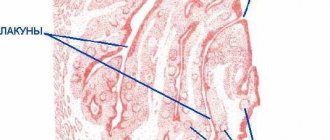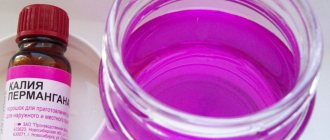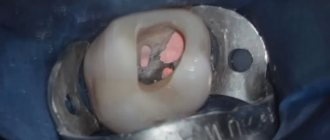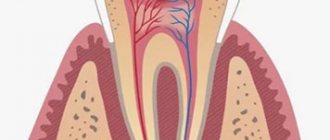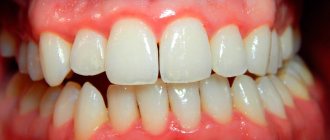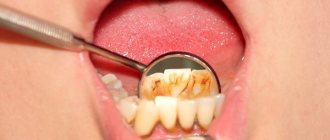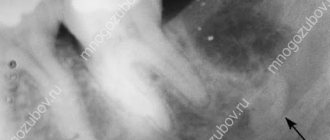What is flux
Flux or periostitis is not a cosmetic defect; the gums and cheeks become swollen due to a damaged tooth, even if external signs of decay are not noticeable. The cause is always an infection that has entered the dental tissue as a result of caries, mechanical damage, sore throat, gum inflammation, etc.
Pathology develops against the background of poor oral hygiene - food remains between poorly brushed teeth, they rot, bacteria enter the surrounding bone and soft tissue, and cause inflammation. Similarly, infection occurs with caries.
Dental treatment
Treatment with antibiotics
Antibiotics are prescribed to stop the infection from progressing. They are also mandatory after surgical treatment and tooth extraction. In severe cases, a home solution will not be effective. For periostitis, the following antibiotics are prescribed:
Lincomycin is widely used for infectious and bacterial diseases of the oral cavity. Do not take if you have liver or kidney diseases.
Amoxiclav - actively acts against pathogenic microorganisms that cause inflammation in the oral cavity. Can only be taken as prescribed by a doctor.
Antibiotics are prescribed by the doctor, taking into account the characteristics of the disease in each patient. It is forbidden to take them on your own, as they have a large number of contraindications.
How to recognize developing flux
The sooner you start taking action, the better your chances of saving the tooth and avoiding surgery. Flux is far from harmless; neglected suppuration sometimes ends in sepsis with all the ensuing consequences.
Even before the tumor appears, characteristic symptoms appear:
- Weakness.
- Fever.
- Throbbing pain radiating to the head and ears.
- Inflammation of the lymph nodes.
- Bleeding and sore gums.
- Bad breath.
- Pain while chewing.
If you ignore the ailment, in the hope of being patient and cured with folk remedies, one day an asymmetrical tumor of the face will definitely appear.
As a rule, the mucous membrane around the tooth swells first, and a lump forms on the gum. After the flux has matured, a tumor forms on the lips, cheek, and under the eye if a tooth from the top row is diseased. When a tooth in the lower jaw is affected, swelling of the cheek and chin on one side is observed.
In children and the elderly, the symptoms do not appear as clearly as in middle-aged and young people, but the danger of pus penetrating into the body tissues is very high at any age.
Sometimes the flux becomes chronic, the tumor periodically appears and falls off. If a person does not see a doctor, the bone over the lesion gradually thickens and the inflammatory process continues. Poor oral hygiene and caries, as well as hypothermia, can provoke the formation of gumboil.
Attention! Do not under any circumstances try to puncture a swollen gum or squeeze pus out of it - you can introduce an infection into the surrounding tissue, and this is fraught with serious consequences.
Infected connective tissue becomes loose and soft. Severe pain appears, which can go away on its own or after painkillers. However, getting rid of discomfort does not mean that the infection is defeated - it sinks deeper and destroys the tooth root.
Take care of your teeth
Medicines for rinsing
There are a large number of medicinal solutions that are recommended for rinsing with flux.
Flux rinses must be effective. This is very important because it is necessary to prevent the development of infection in time. Before use , be sure to read the instructions to make sure there are no contraindications. Medicines can be combined with folk remedies. Then the effectiveness of treatment will increase.
How does soda work for flux?
Baking soda or sodium bicarbonate has an antiseptic effect. The beneficial properties of weak alkali make it possible to effectively use the substance when you need to soothe itching, normalize the acidity of the stomach, relieve the burning sensation of heartburn, and disinfect skin lesions.
Sodium bicarbonate is commonly used to whiten teeth and eliminate bad breath. At home, a solution of soda can relieve the inflammatory process and reduce gumboil, but to reliably eliminate the causes and prevent consequences, go to the dentist as soon as possible.
How to remove gumboil and pain before seeing a doctor
Traditional and pre-medical methods will be useful to pacify the pain, but do not relax and do not wait for a new outbreak of inflammation - go to the doctor. The sooner you do this, the higher the likelihood that the tooth will be saved.
Soda-salt rinse
The solution will disinfect and reduce pain, swelling will gradually subside.
- In a glass of boiled water at a pleasant temperature, dissolve a teaspoon of soda, the same amount of salt and a drop or two of iodine. Rinse your mouth at least 8-9 times a day. The pain and swelling will subside, gradually reduce the number of rinses to two or three.
Soda lotion
The lotion can be applied at night; it will draw pus from the bone and alleviate suffering.
- Soak gauze or bandage in boiled water. Wrap some baking soda in a cloth and apply it to the sore gum. You need to keep the lotion for at least an hour and a half and repeat the procedure three times a day.
The lotions should be stopped when the abscess opens, otherwise an infection may get into the wound.
Attention! Do not heat the flux and do not use hot water for rinsing and lotions. Under the influence of heat, inflammation progresses.
Effective remedies for relieving toothache and gumboil
You can rinse your mouth for toothache and gumboil with soda, salt, herbal decoctions and pharmaceutical preparations.
Baking soda
The effectiveness of sodium bicarbonate has been tested in practice; rinsing quickly relieves pain and accelerates the maturation of an abscess.
- Dissolve a tablespoon of baking soda in a glass of hot boiled water. Let cool to room temperature. Rinse your mouth for 20 minutes, spitting out the solution every minute.
Furacilin
Furacilin or nitrofural is used in dentistry as a local broad-spectrum antiseptic.
- Dissolve two furatsilin tablets in half a glass of warm water. Tablets can be replaced with a ready-made pharmaceutical solution of 0.02 percent concentration. Rinse for 15 minutes every couple of hours.
You can enhance the effect by pre-rinsing with soda.
Potassium permangantsovka
Calcium permanganate is a well-known disinfectant that should always be in your home medicine cabinet.
- Thoroughly dissolve several crystals of potassium permanganate in a glass of warm water, making sure that no grains remain. Rinse your mouth with a faint pink solution for 10 minutes at intervals of two hours.
Table or sea salt
Stops the development of inflammation, disinfects and quickly relieves pain.
- Dissolve a tablespoon of kitchen or sea salt in a glass of water at room temperature. Continue rinsing until the pain goes away.
If there are ulcers or other lesions in the mouth, salt rinsing is contraindicated.
Peroxide
The antiseptic and healing properties of hydrogen peroxide are actively used in traditional medicine. Peroxide softens tissues, cleanses them of purulent secretions and opens the way to the source of inflammation.
- Dissolve a teaspoon of pharmacy peroxide in a glass of water and rinse your mouth. After this procedure, it is recommended to rinse with a chlorhexidine solution.
Chlorhexidine
Sold without a prescription and used to eliminate inflammation caused by many pathogens. The advantage of this antiseptic is its long-lasting action and proven effectiveness.
- Rinse your mouth with boiled water. Pour chlorhexidine into a tablespoon and rinse your mouth for about half a minute. Repeat twice or thrice. The procedure can be performed up to three times a day.
After rinsing, do not brush your teeth or eat for at least one hour. Also try not to use toothpaste immediately before rinsing - the ingredients in toothpastes reduce the effectiveness of chlorhexidine. If you experience discomfort on the oral mucosa while rinsing, dilute the substance with water.
Attention! Chlorhexidine is prohibited for internal use, although a few drops of the substance cannot cause harm to health. If you accidentally swallow the substance, rinse your stomach and take activated charcoal.
Sagebrush
The plant has the ability to quickly relieve pain and relieve inflammation.
- Pour a tablespoon of dry herb into a glass of boiling water. Leave covered for 30-40 minutes. Rinse with infusion or apply as a lotion to a sore tooth.
Sage
A well-known “dental herb” with an active anti-inflammatory effect. The alkaloids in sage quickly relieve pain.
- Pour boiling water over three to four tablespoons of dry sage herb, let it brew and cool to room temperature. Rinse your mouth for at least 20-25 minutes and repeat rinsing until the pain goes away.
In addition to the listed medicinal plants, you can use collections and decoctions of other herbs. Rinsing with infusions of St. John's wort, mint, elderberry, chamomile, lemon balm, calendula, and oak bark eases the condition. They can be brewed separately or mixed.
Ointments and gels
Local use of ointments for periostitis contributes to the rapid extinction of inflammatory processes, faster healing of damaged tissues, and effective elimination of pain.
Vishnevsky ointment
With flux, Vishnevsky ointment can stop the development of the purulent process, quickly eliminate tissue swelling and relieve toothache. The xeroform included in the drug has an antibacterial effect, birch tar increases blood flow at the site of injury, and castor oil promotes deeper penetration of medicinal components.
Vishnevsky ointment is used in the initial stages of the disease or after opening the abscess. The drug is applied to a sterile small gauze pad and applied to the skin of the cheek in the area of inflammation for several hours.
You cannot use Vishnevsky ointment if you suspect the presence of a purulent focus at the site of periostitis. This can cause worsening of the condition and the development of complications.
Metrogyl denta
The drug is available in the form of a gel, which contains antibacterial components: metronidazole and chlorhexidine. Therapeutic substances penetrate perfectly into the source of inflammation, quickly relieve pain, eliminate tissue swelling and prevent the development of purulent complications. The gel is generously applied directly to the gum mucosa above the site of periostitis. After using it, you should refrain from drinking or eating for at least 30 minutes. The procedure is repeated three times a day until the inflammatory reactions subside.
Levomekol
The ointment contains ingredients that have a wide spectrum of antibacterial activity and promote rapid tissue regeneration. Levomekol does not lose its properties in the presence of pus, therefore it is preferable in cases where it was not possible to avoid the process of suppuration. The ointment is used three times a day. It is applied to a sterile gauze or cotton swab and applied to the flux for 2-3 hours. If a purulent focus has been opened, the drug can be injected directly into the resulting cavity. It is necessary to treat dental flux with Levomekol until complete recovery.
Rules for using flux soda
Soda helps relieve pain and reduce swelling, sometimes it is possible to completely get rid of the gumboil, but the reason for its appearance will remain and sooner or later everything will happen again. It will not be possible to solve the problem without a dentist, so do not delay your visit. In the meantime, please note a few rules:
- Do not prepare the baking soda solution ahead of time. A portion should be used during one procedure, then the alkali loses its beneficial properties.
- It is advisable to use solutions rather than applications so that the soda powder does not burn the mucous membrane.
- Do not increase the concentration of the solution - the therapeutic effect will not become greater.
- The temperature of the solution should be about 20-22 oC.
- Try not to drink or eat for at least 40-60 minutes so that the substance has time to take effect.
Take care of your teeth
Contraindications
There are practically no contraindications to the use of sodium bicarbonate, but only if the dosages and rules of use are observed. In some cases, soda is contraindicated:
- Young children cannot rinse their mouths on their own. There is a risk that the child will swallow the solution, and this is undesirable.
- If you have been to the dentist and your gums have been cut or a tooth has been removed, you do not need to rinse your mouth with baking soda. The lye will soften the blood clot protecting the wound, and bleeding may begin.
- You can rinse several times a day, but the interval between procedures should not be less than two hours. With more frequent use, the mucous membrane will dry out.
- Stomach ulcer is another contraindication. In this case, getting soda into the stomach is extremely undesirable.
- Sodium bicarbonate rinses should not be used if you have a soda allergy or diabetes.
We hope our recommendations will be useful, and if necessary, you will ease your suffering before going to the dentist. Tell us about your experience and don't forget to like it.
Possible complications
Flux is a purulent disease and can often cause complications. Doctors do not recommend self-medication . Therefore, before choosing what to rinse your mouth with flux, you should think about the risk of self-treatment. The development of complications can be recognized by the following symptoms:
- rapid deterioration in health;
- increased body temperature;
- difficulty moving the jaw;
- severe pain when chewing;
- asymmetrical facial changes.
Timely contact with the dentist is the key to successful treatment.

